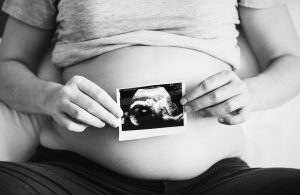IVF sex selection is also known as gender selection. IVF gender selection is a process where embryos are chosen in order of the sex chromosomes within an IVF cycle, which will then produce either a male or female baby depending on what the parents want. Most times, this is only available for those with medical reasons that are linked to chromosome problems. However it is possible for parents to elect this option. Read on to learn about the ins and outs of IVF gender selection.
PGD Sex Selection
The primary process for choosing the gender of a baby is a pre-implantation genetic diagnosis. The IVF cycle has many parts to it, and there are a number of embryos that are created, and then healthiest one will be chosen and implanted into the uterus. PGD is used to check for different genetic defects, which can also determine the sex of the embryo. An embryo which is of the desired sex will be implanted into the uterus given it is healthy.
 Micro-sorting
Micro-sorting
Micro-sorting is another sex selection procedure which is performed before all the embryos are created. Collected sperm is then separated using a machine called a laser flow cytometer which analysis the chromosomes into the x for female and y for the male. A benefit of this procedure means the sorted-out sperms can be used for IUI, which is less expensive than IVF.
When should sex selection be used?
Sex selection is quite uncommon and is not available just to parents who want to conceive the desired gender. It is mostly used when the mother or father is a carrier for a genetic condition linked to one sex.
Sex selection can be very controversial. Different hospitals will have their policies when it comes to sex selection techniques. Some clinics may only allow gender selection for those who are already needing IVF. Most times, you won’t be able to make IVF sex selection without a linked medical reason. Sometimes sex selection can be used for family balancing, for example; if you have three boys and want to have a baby girl. In order to qualify for the family balancing sex selection, then you need to have a child already and choose the opposite gender to what you already have. This type is more costly as there is no medical reason for wanting to select the sex of your child. Also, by choosing the gender means you may not be selecting the healthiest embryo.
IVF sex selection should be considered and talked over with your doctor if you suffer from any of the following:
- Either one or both parents are carrying a single gene mutation that you wish to avoid passing onto children.
- Having a chromosome rearrangement that results in genetically abnormal sperm or eggs.
- Had a previous pregnancy that was affected by a chromosome abnormality.
- Advanced maternal age when the mother is over 38 years of age
- Recurrent miscarriages
- Where several IVF cycles failed
Some genetic conditions only affect a particular gender, such as conditions like muscular dystrophy and haemophilia. If it is not possible to find the genetic error that is causing the condition, then IVF sex selection can be used in order to find out the gender of the embryos. So only the embryos with the specific gender and the right number of chromosomes are transferred.
Pre-implantation genetic testing has been able to help many patients that have not been able to get pregnant or that have genetic disease within the family. Your doctor will talk through things with you and provide you with the risk involved in IVF sex selection and offer support for your decision.



